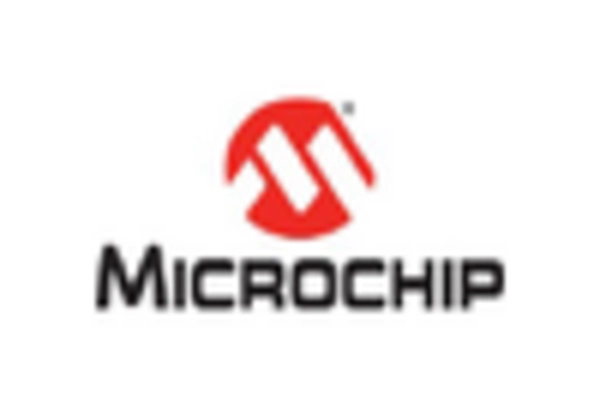Emergence of 5G Technology
The rollout of 5G technology is significantly impacting the Flash Field Programmable Gate Array Market. With the increasing need for faster and more reliable communication networks, flash FPGAs are being utilized to support the infrastructure required for 5G deployment. Their ability to be reprogrammed and optimized for specific tasks makes them ideal for handling the complex requirements of 5G networks. As 5G technology continues to expand, the demand for flash FPGAs is expected to rise, driven by the need for enhanced network performance and flexibility. This trend indicates a promising future for flash FPGA applications in telecommunications.
Rising Focus on Energy Efficiency
Energy efficiency is becoming a paramount concern in the Flash Field Programmable Gate Array Market. As organizations strive to reduce their carbon footprint and operational costs, the demand for energy-efficient solutions is increasing. Flash FPGAs are recognized for their ability to deliver high performance while consuming less power compared to traditional alternatives. This characteristic is particularly appealing in sectors such as automotive and industrial automation, where energy consumption is a critical factor. Market trends suggest that the emphasis on energy efficiency will continue to shape the development and adoption of flash FPGAs, as companies seek to implement sustainable practices in their operations.
Increasing Adoption of Embedded Systems
The Flash Field Programmable Gate Array Market is experiencing a notable surge in the adoption of embedded systems across various sectors. This trend is driven by the need for efficient, customizable solutions that can be rapidly deployed. Industries such as automotive, telecommunications, and consumer electronics are increasingly integrating embedded systems, which often utilize flash FPGAs for their flexibility and reconfigurability. The market for embedded systems is projected to grow significantly, with estimates suggesting a compound annual growth rate of over 10% in the coming years. This growth is likely to bolster the demand for flash FPGAs, as they provide the necessary adaptability and performance required in modern embedded applications.
Advancements in Semiconductor Technology
Technological advancements in semiconductor manufacturing are playing a crucial role in the Flash Field Programmable Gate Array Market. Innovations such as smaller process nodes and improved fabrication techniques are enabling the production of more powerful and efficient flash FPGAs. These advancements allow for higher integration levels, reduced power consumption, and enhanced performance metrics. As a result, the market is witnessing a shift towards more sophisticated FPGAs that can handle complex computations and data processing tasks. The semiconductor industry is expected to continue evolving, with projections indicating a steady increase in the performance capabilities of flash FPGAs, thereby driving their adoption across various applications.
Growing Demand for High-Speed Data Processing
The need for high-speed data processing is becoming increasingly critical in the Flash Field Programmable Gate Array Market. As data generation accelerates, particularly in sectors like telecommunications and data centers, the demand for solutions that can process this data efficiently is rising. Flash FPGAs are well-suited for high-speed applications due to their parallel processing capabilities and low latency. Market analyses suggest that the demand for high-speed data processing solutions will continue to grow, with flash FPGAs being a preferred choice for many organizations looking to enhance their data handling capabilities. This trend is likely to drive further investments in flash FPGA technology.














Leave a Comment